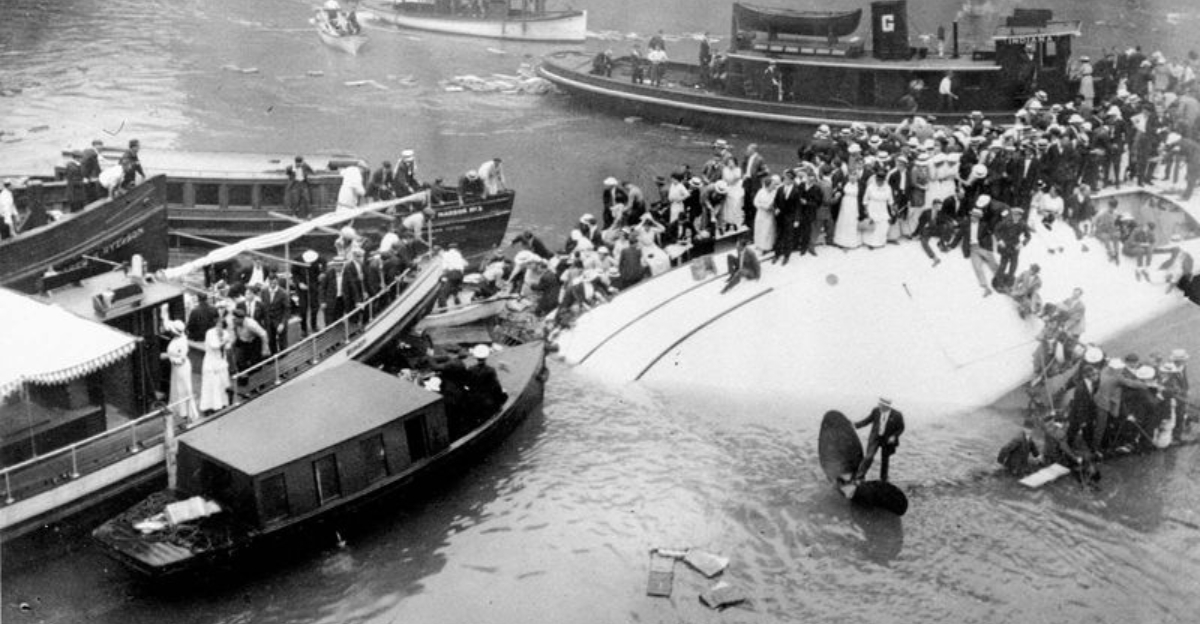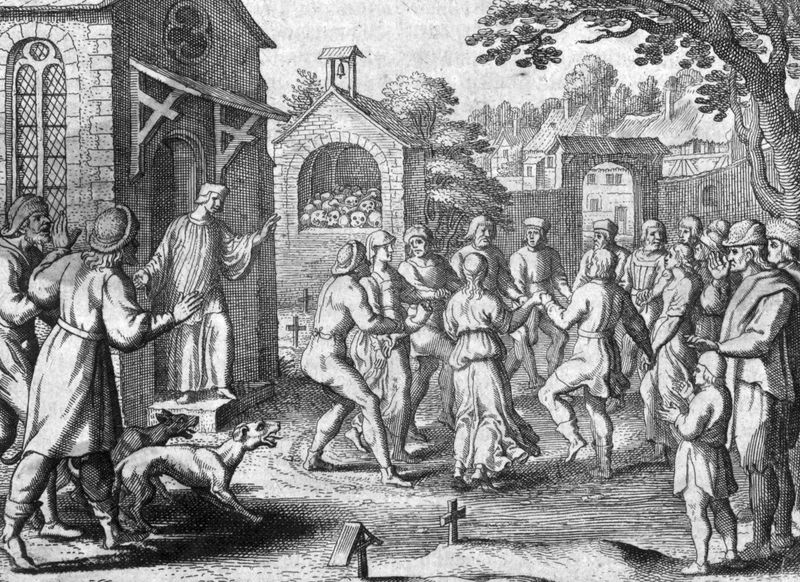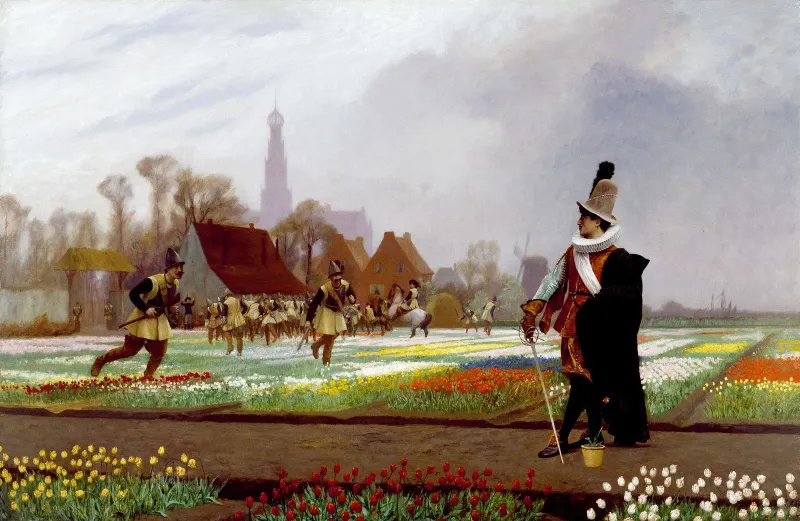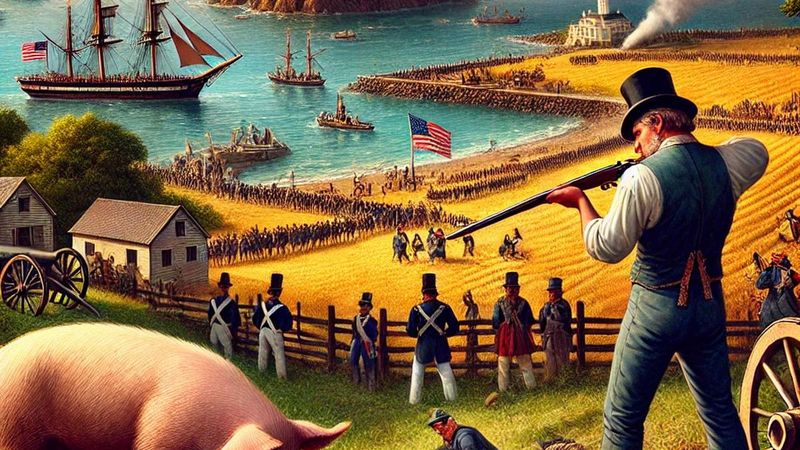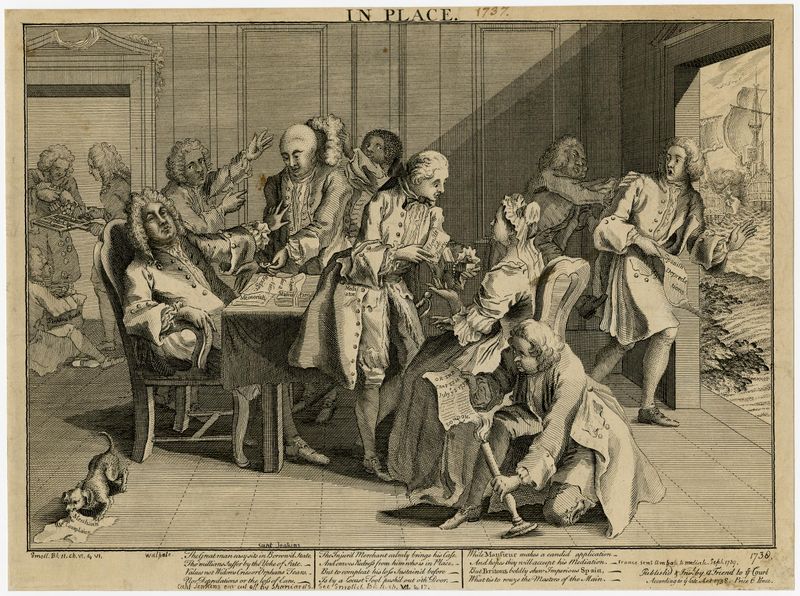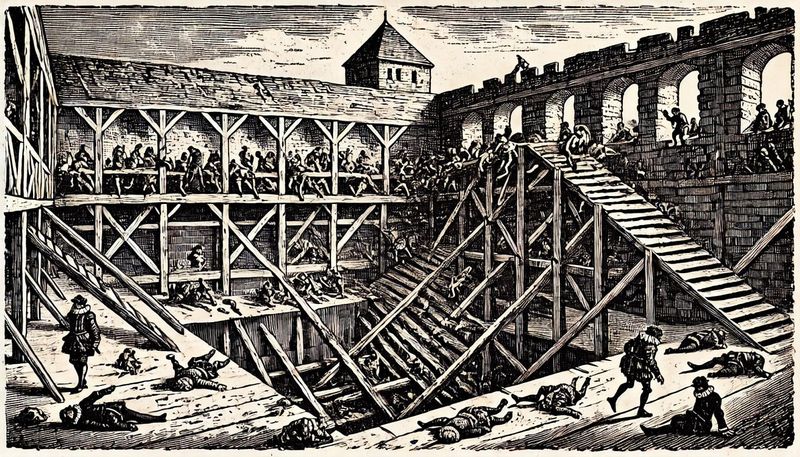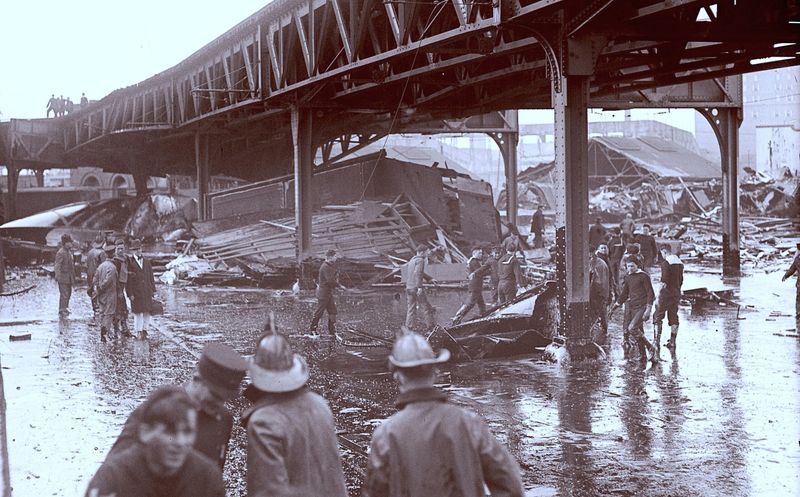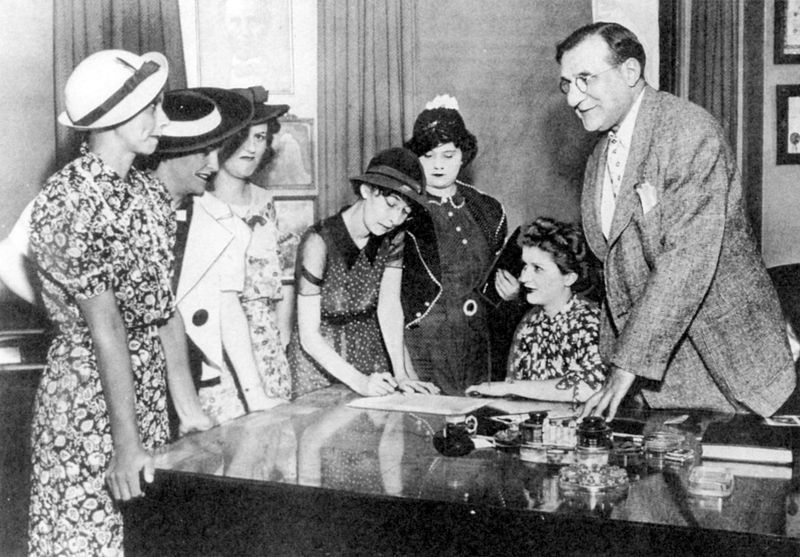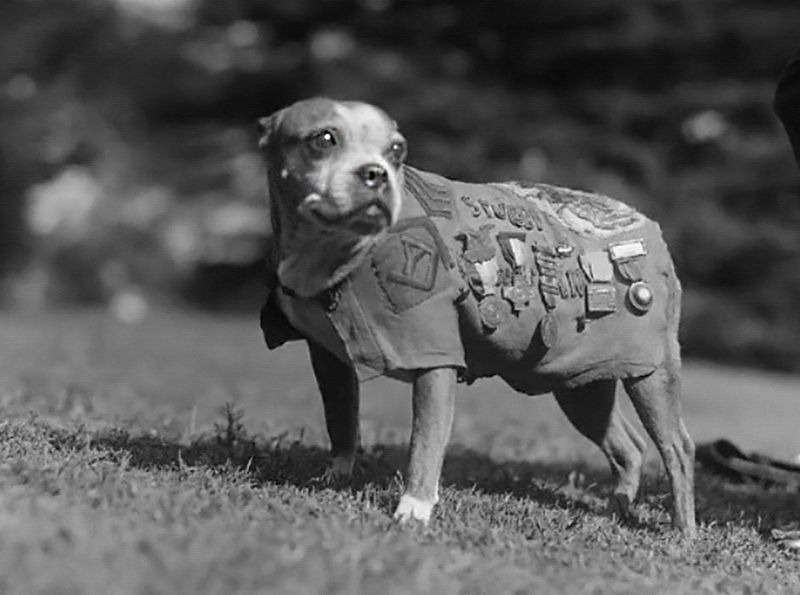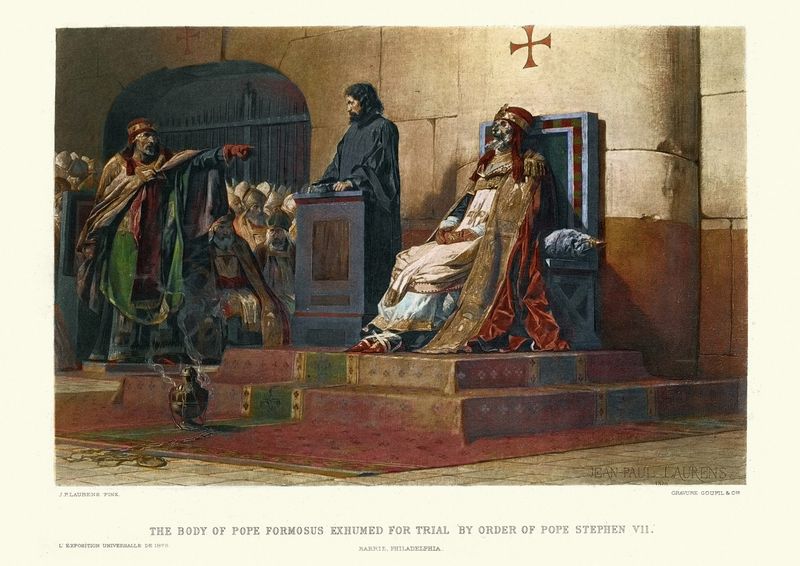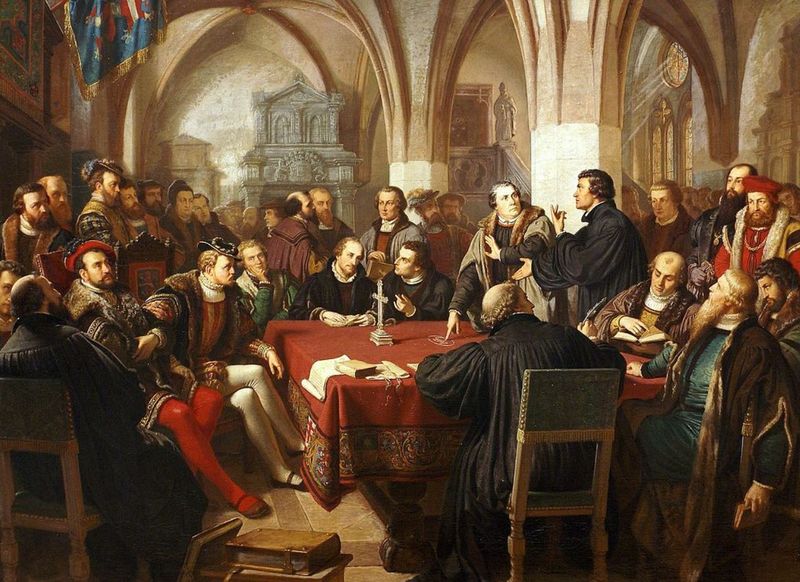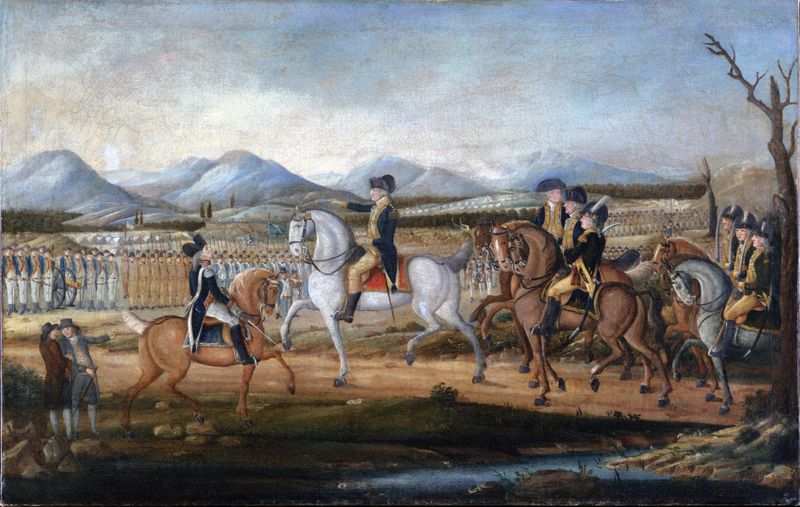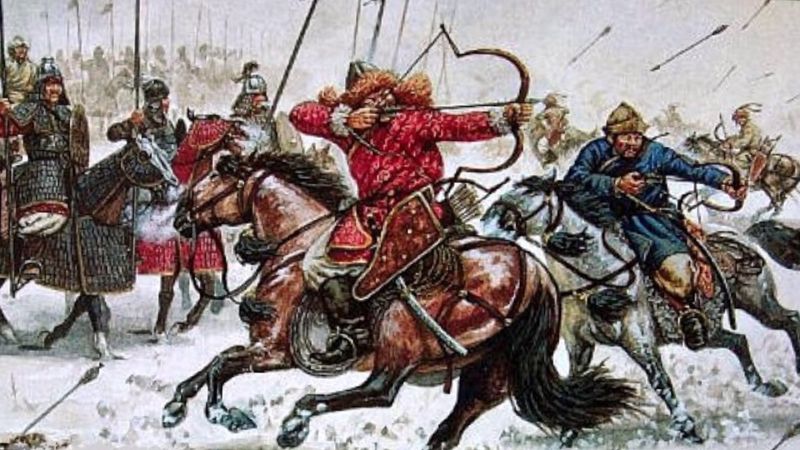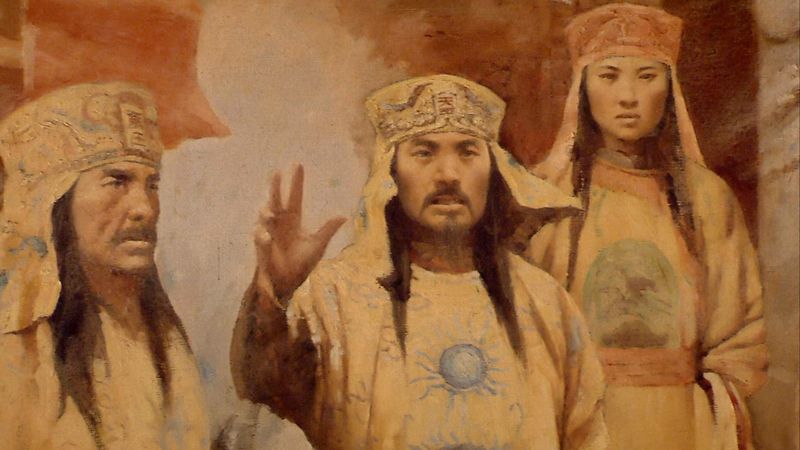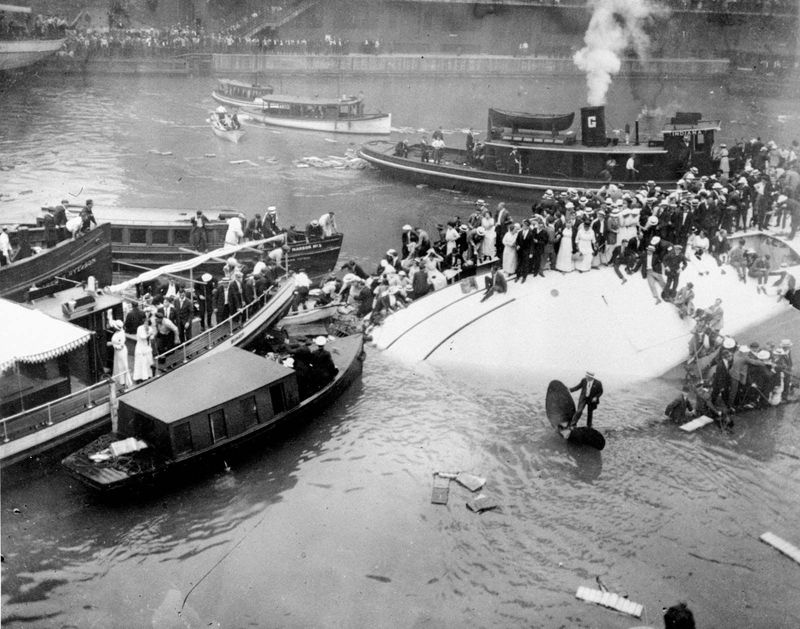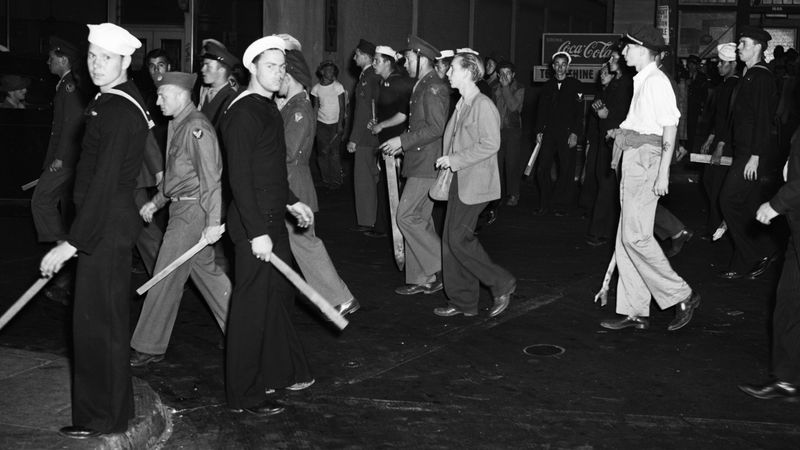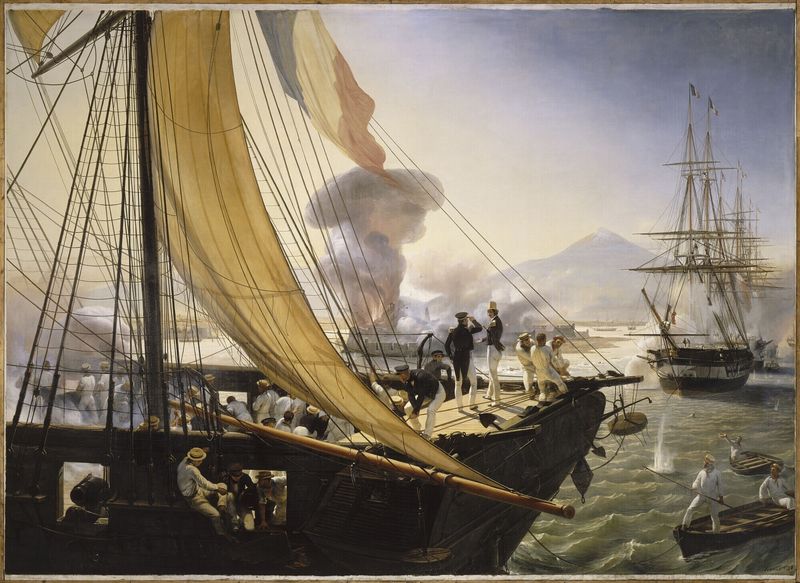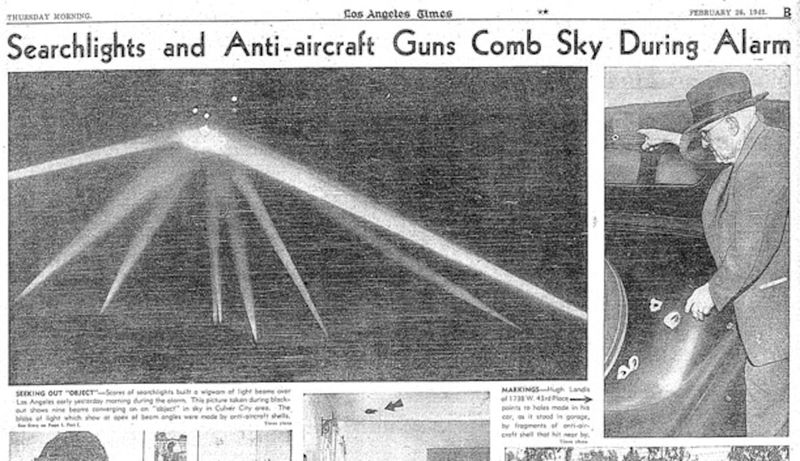History is filled with fascinating stories that often go untold. While school curriculums cover many major events, numerous intriguing and lesser-known historical moments remain largely unacknowledged.
In this post, we explore 19 such captivating events that you probably didn’t learn about in school. These tales of intrigue, resilience, and innovation will expand your understanding of the past and offer a fresh perspective on history.
1. The Dancing Plague of 1518
In the summer of 1518, a bizarre phenomenon gripped the town of Strasbourg. Known as the Dancing Plague, it began when a woman started dancing feverishly in the streets. Within days, dozens joined her, seemingly unable to stop.
The authorities were baffled, as the dancers continued for weeks, some collapsing from exhaustion. The cause remains a mystery, with theories ranging from mass hysteria to ergot poisoning.
Despite various attempts to intervene, including hiring musicians, the plague gradually subsided on its own. This strange event highlights the unexplained mysteries of human behavior.
2. The Great Emu War
In 1932, Australia faced an unexpected adversary: emus. The flightless birds were causing havoc in Western Australia, damaging crops and outpacing farmers’ efforts to control them.
The military intervened, attempting to cull the emu population using soldiers armed with machine guns. Surprisingly, the emus were more elusive than anticipated, evading capture and surviving the assault.
The operation was ultimately deemed a failure, as the emus continued to thrive. This unusual conflict, known as the Great Emu War, serves as a reminder of nature’s resilience against human intervention.
3. Tulip Mania
In the 1630s, the Netherlands experienced one of the first recorded speculative bubbles: Tulip Mania. Tulips, introduced to Europe from the Ottoman Empire, became a luxury item, with prices soaring to extraordinary levels.
At the height of the craze, a single bulb could cost as much as a house. The market eventually collapsed, leading to financial ruin for many investors.
Tulip Mania is often cited as an early example of economic bubbles, a phenomenon that continues to this day. This event underscores the timeless allure and volatility of speculative investment.
4. The Pig War
In 1859, a seemingly trivial incident almost led to war between the United States and Britain. The Pig War began when an American farmer shot a British-owned pig that was rooting in his garden on San Juan Island.
Tensions escalated as both nations sent military forces to the island. Diplomatic negotiations ensued, preventing violence, and the dispute was eventually resolved peacefully.
This peculiar conflict, resolved without a single casualty, exemplifies how small misunderstandings can spiral into major diplomatic issues. It remains a humorous reminder of the complexities of international relations.
5. The War of Jenkins’ Ear
The War of Jenkins’ Ear, fought between Britain and Spain from 1739 to 1748, was sparked by an unusual grievance. A British captain, Robert Jenkins, claimed his ear was severed by Spanish coast guards.
Using his severed ear as a rallying point, Britain declared war, driven by broader imperial tensions. The conflict saw brutal naval engagements and an expansion into the War of the Austrian Succession.
Though largely forgotten today, this war illustrates the fragile nature of 18th-century international politics. It serves as a testament to how personal vendettas can escalate into full-scale conflicts.
6. The Erfurt Latrine Disaster
In 1184, a tragic and somewhat comical accident struck the town of Erfurt, Germany. During a gathering of nobles at the Church of St. Peter, the floor gave way, plunging everyone into a cesspit below.
Many drowned or suffocated in the filth, leading to a significant loss of life among the nobility. The event is known as the Erfurt Latrine Disaster, a reminder of the precariousness of medieval architecture.
This grim incident highlights the perilous conditions of past living environments and stands as an eerie anecdote in the annals of European history.
7. The Great Molasses Flood
In 1919, Boston was the site of a sticky disaster known as the Great Molasses Flood. A massive storage tank burst, releasing over two million gallons of molasses into the streets.
The wave of syrup swept through the North End, destroying buildings and claiming lives. It moved at an estimated 35 miles per hour, trapping everything in its path.
The disaster prompted changes in construction regulations and remains a quirky historical episode. It serves as a reminder of the unforeseen consequences of industrialization.
8. The Radium Girls
In the early 20th century, young women known as the Radium Girls worked in factories painting watch dials with radium-based paint. Unaware of its dangers, they ingested radium by licking their brushes.
Over time, they suffered from severe radiation poisoning, which led to a landmark lawsuit and changes in labor rights. The Radium Girls’ plight brought attention to occupational hazards and the need for workplace safety.
Their story is a poignant reminder of the importance of health and safety regulations, and the enduring fight for workers’ rights.
9. The Battle of the Stray Dog
In 1925, an errant dog set off an international incident known as the Battle of the Stray Dog. The event occurred on the border between Greece and Bulgaria, where tensions were already high.
A Greek soldier shot the dog, leading to a skirmish that resulted in several deaths. The League of Nations intervened, imposing sanctions on Greece and resolving the conflict diplomatically.
This bizarre event underscores the unpredictable nature of border disputes and the delicate balance of peace. It highlights the importance of diplomacy in defusing potential conflicts.
10. The Year Without a Summer
The year 1816 became known as the Year Without a Summer due to a significant climatic anomaly. The eruption of Mount Tambora in Indonesia sent vast amounts of ash into the atmosphere, affecting global weather patterns.
Temperatures dropped, crops failed, and famine spread across the Northern Hemisphere. The unusual weather inspired literary works like Mary Shelley’s “Frankenstein.”
This event illustrates the profound impact of natural phenomena on human life and the interconnectedness of global systems. It serves as a cautionary tale about climate change and environmental stewardship.
11. The Cadaver Synod
In 897, the Catholic Church conducted one of its most bizarre trials, known as the Cadaver Synod. Pope Stephen VI put the corpse of his predecessor, Pope Formosus, on trial for political reasons.
The macabre spectacle saw the deceased pope dressed in vestments, propped up on a throne, and accused of perjury. The corpse was found guilty, and its papacy was annulled.
This strange episode highlights the tumultuous nature of medieval papal politics and the lengths to which individuals would go to assert power. It remains a curious footnote in church history.
12. The Affair of the Sausages
The Affair of the Sausages, which took place in 1522, was a significant event in the Swiss Reformation. Ulrich Zwingli, a leader of the Reformation, broke with Catholic tradition by allowing his followers to eat sausages during Lent.
This act of defiance against church authority signaled a shift towards religious reform and greater individual freedom. It sparked debates that contributed to the spread of Protestantism in Switzerland.
This event underscores the influence of seemingly minor acts of rebellion in the broader context of religious and social change. It illustrates the evolving nature of belief systems.
13. The Whiskey Rebellion
The Whiskey Rebellion of the 1790s was a pivotal moment in early American history. Farmers in western Pennsylvania protested a federal excise tax on whiskey, which they saw as unfairly targeting their livelihoods.
The rebellion tested the new nation’s resolve, leading President George Washington to deploy troops to quell the uprising. It marked the first significant test of federal authority under the U.S. Constitution.
This event highlights the challenges of governance in a fledgling democracy and the ongoing struggle between federal and states’ rights. It is a testament to the complexities of building a nation.
14. The Siege of Caffa
The Siege of Caffa in 1346 is often cited as the beginning of the Black Death’s spread to Europe. The Mongol army besieging the port city of Caffa catapulted plague-infected corpses over the city walls.
This early instance of biological warfare inadvertently facilitated the spread of the plague to Europe via fleeing merchants. The pandemic decimated populations across the continent, reshaping societies.
The siege is a chilling reminder of the devastating impact of disease and the unintended consequences of warfare. It underscores the global interconnectedness that can exacerbate the spread of pandemics.
15. The Taiping Rebellion
The Taiping Rebellion, lasting from 1850 to 1864, was one of the deadliest conflicts in history, yet it is often overlooked. Led by Hong Xiuquan, who claimed to be the brother of Jesus, the rebellion aimed to establish a heavenly kingdom in China.
The conflict resulted in the death of millions and caused massive social upheaval. Despite its scale, it remains relatively unknown in the West.
The rebellion underscores the potential for ideological movements to inspire large-scale conflict and change. It serves as a reminder of the complexities of China’s historical landscape.
16. The SS Eastland Disaster
In 1915, the SS Eastland, a passenger ship on the Chicago River, capsized while still docked, leading to one of the deadliest maritime disasters in U.S. history. Over 800 people lost their lives in the tragedy.
The disaster highlighted the lack of proper safety measures and regulations in the shipping industry at the time. It prompted legislative changes to improve passenger safety.
The SS Eastland Disaster serves as a somber reminder of the importance of safety standards and the potential consequences of negligence. It remains a poignant chapter in Chicago’s history.
17. The Zoot Suit Riots
The Zoot Suit Riots of 1943 were a series of conflicts in Los Angeles between servicemen and Mexican-American youths. The youths, identifiable by their distinctive “zoot suits,” faced racial discrimination and violence.
The riots highlighted tensions between minority communities and authorities, reflecting broader racial issues in America. They spurred discussions about civil rights and social justice.
This tumultuous period underscores the challenges of cultural identity and the fight against systemic racism. It serves as a reminder of the ongoing journey towards equality and understanding in diverse societies.
18. The Pastry War
The Pastry War (1838-1839) was a conflict between France and Mexico, sparked by a French pastry chef’s complaint over damages during civil unrest. France demanded compensation, leading to a blockade and military intervention.
The conflict ended with Mexico agreeing to pay reparations, highlighting the fragile international relations of the time. It is a curious example of how minor grievances can escalate into military confrontations.
This event underscores the complexities of diplomatic negotiations and the unpredictable nature of international politics. It serves as a humorous yet poignant reminder of historical tensions.
19. The Battle of Los Angeles
During World War II, Los Angeles experienced a mysterious and alarming event known as the Battle of Los Angeles. In 1942, unidentified flying objects were spotted over the city, prompting a massive anti-aircraft response.
The barrage lasted for hours, causing damage and panic, but no enemy aircraft were found. The incident was later attributed to a false alarm, possibly caused by weather balloons.
This event highlights the fear and uncertainty of wartime and the potential for mass hysteria. It remains a mysterious episode in military history, fueling conspiracy theories about UFOs.
